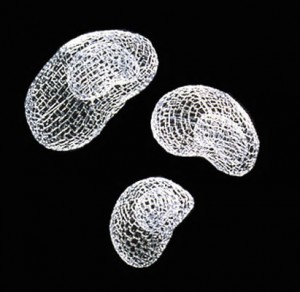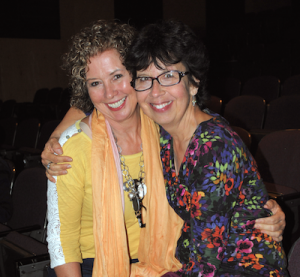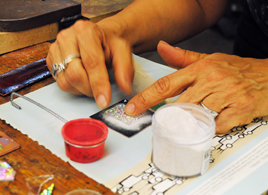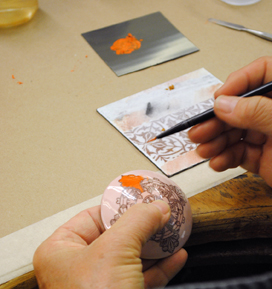Two recent workshops help re-define enamel’s place in the art world.
Sometimes similar ideas appear in unrelated places and then turn out to be related after all, in what I think of as an ‘archetype’ in the Jungian sense of the word. This is what has slowly been happening in various corners of the art and craft communities, as makers of all kinds are treating enamel more as a glass, and less as simply a glaze for metal.
The shift might seem subtle, but the implications are huge. It means that enamel can be thought of as its own medium, with its own technical considerations and potential. It also means that for the first time in decades, enameling can be divorced from the process of metalsmithing, and can instead be included in the study of glass and other art media. To re-define enamel as glass will dramatically expand its role as a true art medium.
I’m seeing evidence of this shift at an academic level as well as anecdotally in my own experience. This year, for the first time, the Enamelist Society conference is holding two workshops specifically about glass. One of the conference speakers, Beth Ann Gerstein, who sits on the board of the American Museum of Ceramic Art, will be leading a panel on the subject, titled “Crossovers in Enamel on Metal and Enamel on Glass.” At The Crucible, more and more glass artists are taking my enameling classes. Ceramicists are asking me if they can enamel clay. And I’m fielding many more questions about the material science of enameling, and what materials are compatible with, meaning fusible to, each other.
When I first conceived of the Center for Enamel Art two years ago, part of my intention was for it to provide a place for the cross-fertilization between various media. I think it is no coincidence that the first two workshops sponsored by the Center’s 2015 Radical Enameling Workshop Series happened back-to-back in the beginning of June, one day after the Glass Art Society met in San Jose, CA and during the opening for the Center’s co-sponsored juried exhibition, California Now: Clay, Glass and Enamel.
Mary Chuduk and Jan Harrell, who taught these workshops, are themselves good friends and long-time colleagues, and have co-taught workshops at Arrowmont and elsewhere.
Though these workshops were quite different, the basic principle in each was the same: Enamel is glass. Their experiences teaching these courses–their difficulties as well as their successes–will be very useful as we begin forging a new path for enameling.
Enamels on Glass, Glass into Enamel: Exploratory Imagery
Chuduk recently took a detour from her narrative enamel work dealing with women’s identities and oppression to explore the nature of fused glass, and how enamelists and glass artists could benefit from each other’s technical knowledge. When she made her proposal to teach Enamels on Glass, Glass into Enamel: Exploratory Imagery, her explorations had just begun. By the time the workshop began, Chuduk, a consummate networker and researcher, had taught herself enough about the science of fused glass in order to work with both glass artists and enamelists. But only just enough, as it turned out!
As Chuduk discovered, it isn’t always easy to break new ground. Special equipment was needed in order to teach the workshop in a single classroom. She ended up jockeying between the Crucible’s glass fusing studio and the enameling studio on the other side of the building. Enamelists in the workshop needed to be taught about working with COE’s, layering glass sheet, fusing temperatures and times, and finding new uses for materials they were already familiar with. Glass artists had to learn how to use glass materials with enameled metal. Afterwards Chuduk admitted that she had much more to learn, and that the subject matter could not be covered in four days. But though the workshop was fast-paced and sometimes hectic, fortune favors the bold! This was an incredible step forward for enameling, and both glass and enamel artists found exciting new techniques to use in their work.
Using Silkscreens and Decals to Enrich the Enamel Vocabulary
Harrell’s workshop introduced materials used by glass and clay artists to enamelists. Harrell is a natural educator, constantly acquiring knowledge and passing it on. She shared new techniques to reproduce and alter imagery, helping those without much drawing or painting experience to make those images their own. While her workshop did not deal specifically with glass technology, it did help bridge the distance between enameling and glass by showing how this technique, which has primarily been used for glass and clay, can in fact be used for all glazing media.
Harrell and Chuduk also took part in a panel discussion that I moderated, called “Enamel is Glass.” The discussion was wide-ranging, with Chuduk calling on enamelists to expand their horizons by better understanding glass, and Harrell emphasizing that associating with the glass community will help enameling reach a wider audience.
The concept of enamel as glass is not new, but our understanding of that concept is changing, becoming broader, more diverse, and more dynamic. As we learn more about this medium’s possibilities, and embrace new technologies, we are poised to enter a golden age of enameling.
What media do you work in, and how has that changed and evolved over time? What techniques have you “borrowed” from other media? Share your own story in our comments section.







Recent Comments